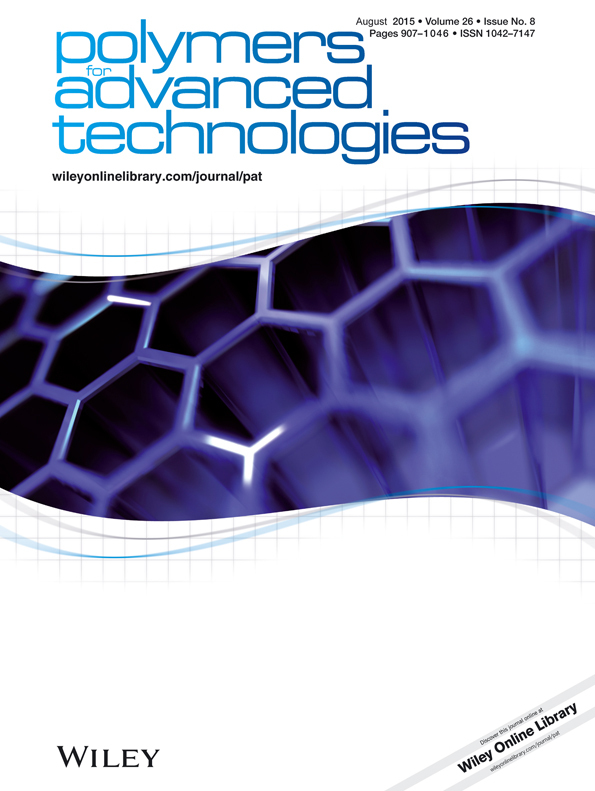Nanostructures and thermal-mechanical properties of cyanate ester/epoxy thermosets modified with poly(ethylene oxide)-poly(propylene oxide)-poly(ethylene oxide) triblock copolymer†
Abstract
Phase structures and mechanical properties of epoxy/acryl triblock copolymer alloys using several curing agents were studied. The nanostructured thermosets were obtained at the compositions investigated for every blends studied. The dependence of the morphological structures on block copolymer content and dicyanate ester, 2,2′-bis(4-cyanatophenyl) isopropylidene (BCE)/epoxy (EP) ratio for thermosetting blends was interpreted on the basis of the difference in hydrogen bonding interactions and reaction resulting from the cross-linked network structures of matrixes. Moreover, the effect of F68 (poly(ethylene oxide)-co-poly(propylene oxide)-co-poly(ethylene oxide) block copolymer) on the curing characteristics and performance of BCE/EP resin was discussed. Results show that the incorporation of F68 cannot only effectively promote the curing reaction of BCE/EP but can also significantly improve the toughness of the cured BCE/EP resin. In addition, the toughening effect of F68/EP is greater than single EP resin. For example, the notched impact strength of systems with BE-80/20 (B and E being the overall contents of BCE and EP, respectively) modified with 10 wt% F68 showed 55% increase compared with neat BCE/EP resin and even is more than three times of that value for pure BCE resin, 5.9 kJ/cm2. Copyright © 2015 John Wiley & Sons, Ltd.




